Where Did Your Buyers Go?
Three trends that could be hiding them… in plain site
Maintaining a pipeline of qualified buyers is harder than it’s ever been.
There will always be ebbs and flows of buyer activity. That’s why we need sales pipelines. But you’ve probably noticed that the ebbing has accelerated recently, as evolving technology creates new buying patterns, and the threat of a recession makes it harder to reach some of your best buyers.
If you want to move transaction-ready buyers into your marketing funnels, it’s vital to adapt to their new buying patterns and preferences. To do this you have to be HONEST with yourself: even if the economy slows, buying will continue to take place. But the people, buying processes, and technology will continue to change.
Here are three long-term trends that may be hiding your buyers in plain sight.
1. Information Abundance
Some years ago, I met a university marketing professor who theorized that all products and services would soon become commodities. That is, buyers would soon have such easy access to product information that they’ll be able to make their choices without sales assistance — based solely on widely-available performance data and price.
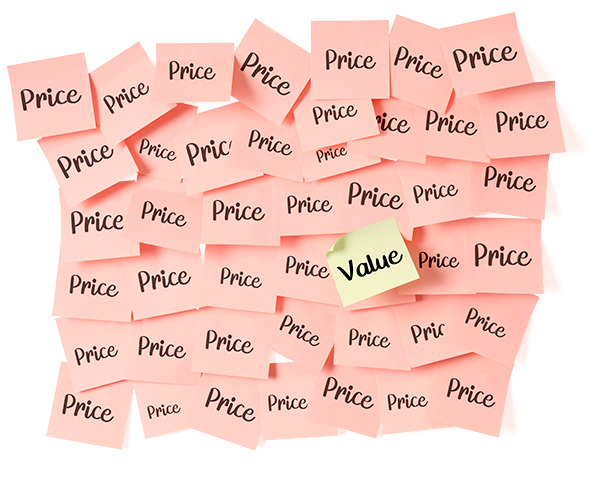 That was more than 15 years ago and we can see how many purchase decisions have moved in that direction.
That was more than 15 years ago and we can see how many purchase decisions have moved in that direction.
We’ve all found ourselves searching online for innovative products, and then jumping onto Google to find the best price. And while we may not be satisfied with the smoothness of the transaction or the suitability of a product , we’ve all participated in the commoditization of some products.
This may not be exactly the future that the marketing professor theorized, but we’re moving in that direction, and it won’t change.
This abundant information leads to the second trend…
2. Solution Buying
We think we invented “solution selling,” but the truth is we’re simply adapting to a new way that customers prefer to buy — by solution rather than by product.
In fact, you’re already an experienced solution buyer, but haven’t quite noticed it. See if you’ve had an experience like this…
A few years ago I went to start my lawn mower for my lawn’s first cut in the spring. The fuel tank was full, but the mower wouldn’t start. I took the mower to my local mower repair center — a provider-based decision — where they told me about the “new gas,” which when left in the tank over the winter, can clog the carburetor. Five days and $165 later, the mower started like a champ.
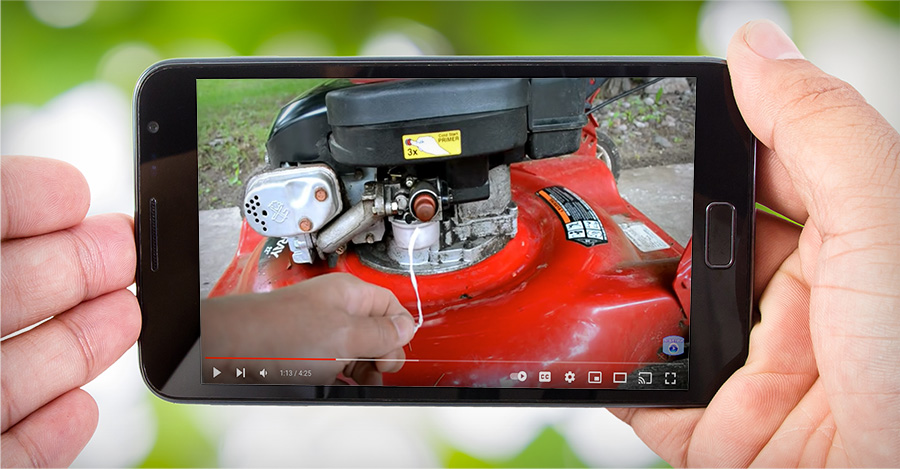 The next year, the problem happened again… even with a fresh tank of gas. “I can’t spend this time and money on my mower every year,” I thought. I took out my phone and searched for a solution on YouTube. And there it was — a video that had over 9,000 likes: “How to fix a mower that won’t start in minutes, for free.” This time, I spent 20 minutes, $0, and used a bread-bag twist tie. The mower fired right up and ran perfectly.
The next year, the problem happened again… even with a fresh tank of gas. “I can’t spend this time and money on my mower every year,” I thought. I took out my phone and searched for a solution on YouTube. And there it was — a video that had over 9,000 likes: “How to fix a mower that won’t start in minutes, for free.” This time, I spent 20 minutes, $0, and used a bread-bag twist tie. The mower fired right up and ran perfectly.
We’re all learning to find solutions through digital channels, both at home and at work. On a larger scale, buying organizations are moving toward workflows and restructured teams that are expert and agile in finding solutions — not just broadly capable suppliers.
These new buying patterns get amped up as we experience the third trend…
3. Economic Cycles
Economic cycles are as inevitable as the tides but a lot less predictable. Our recurring cycles of growth and decline can add serious pressure for businesses to adapt or die.
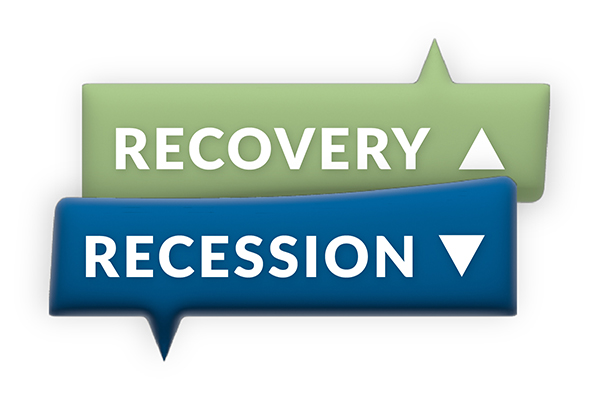 One result is the loss of personal relationships we have with some of our buyers. During prosperous times, we expand relationships and influence. During downturns, people change jobs or get downsized… and now we need to build new relationships just to maintain market share.
One result is the loss of personal relationships we have with some of our buyers. During prosperous times, we expand relationships and influence. During downturns, people change jobs or get downsized… and now we need to build new relationships just to maintain market share.
But during downturns, buying organizations often make critical adaptations to their objectives, structure, and processes. These new marching orders often go undiscussed during purchase conversations but can greatly impact a buyer’s workload, purchase objectives, or year-end performance measures. If we’re not aware of these factors, we can’t help a buyer succeed… and stay in their role.
I know it all sounds pretty gloomy, but it’s not.
As we anticipate the next economic down-cycle — and as we continue to see advances in Information Abundance and Solution Buying — there are ways to hold our ground through the storm… and maybe even improve our positions.
▸ Become the Go-To Solution Resource
Build on your information resources for all the solutions you sell. Help your client-facing team be the resource your customer is eager to find. Provide guides and how-to fact sheets that make the buying decision easier. Fill your website with content that reduces complexity for your buyer.
▸ Reassess Your Target Buyer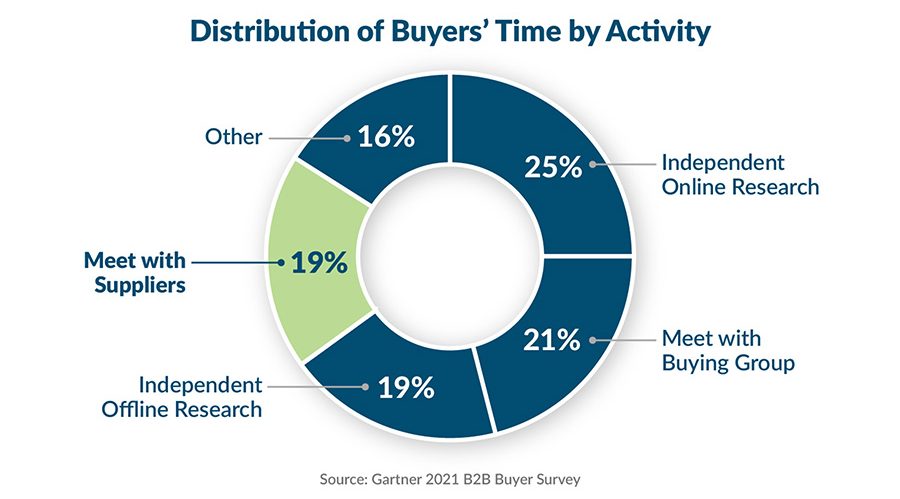
Each year you need to determine who your solution seekers really are… for that year and the next. A 2021 Gartner survey of B2B buyers found that only 19% of a buyer’s time is spent meeting with suppliers. In contrast, the same buyers said they spend 44% of their time on independent research.
We all need to determine who those buyers are and keep our brand in their research zones as they search for their solutions.
▸ Invest in Reputation Building
Buyers trust the experiences of other buyers. Make it easy and rewarding for your raving fans to talk about the great experiences they have with your expert team. Create a place on your website where visitors can learn about the positive experiences of other buyers.
▸ Enable Your Solution Advisors 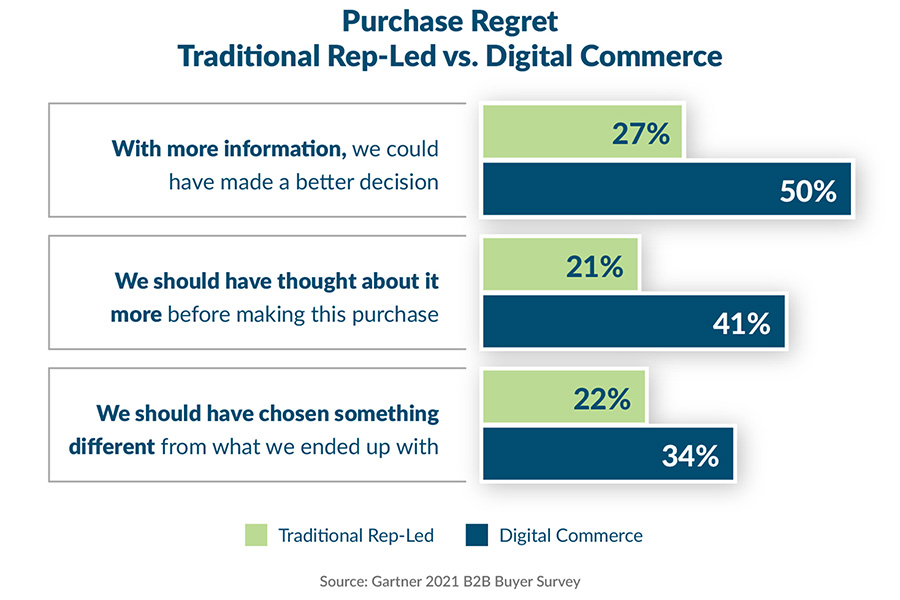
Your sales team is perfectly positioned to act as solution advisors. Your marketing communications should empower them to be exactly that. The Gartner 2021 Buyer Survey found that 83% of B2B buyers said they preferred an automated transaction. Yet, those buyers who had completed automated transactions often regretted the outcome at a much higher rate. So, yes please, automate the transaction. But also give your buyers an expert to lead them through the process. You’ll get better results from your sales team and more loyalty from your customers.
▸ Make Your Brand Relevant to Customers and Team Members
Teams who understand and believe in your company’s value proposition will amplify your value to customers every day. This is a virtuous cycle you can’t afford to disregard. Build internal brand power that aligns with your outward priorities. Your success will come more quickly and all of your teams will be more dedicated to your strategic goals.
Need more ideas? Let’s talk. We’re always ready to help you find and reconnect with your real buyers.




0 Comments